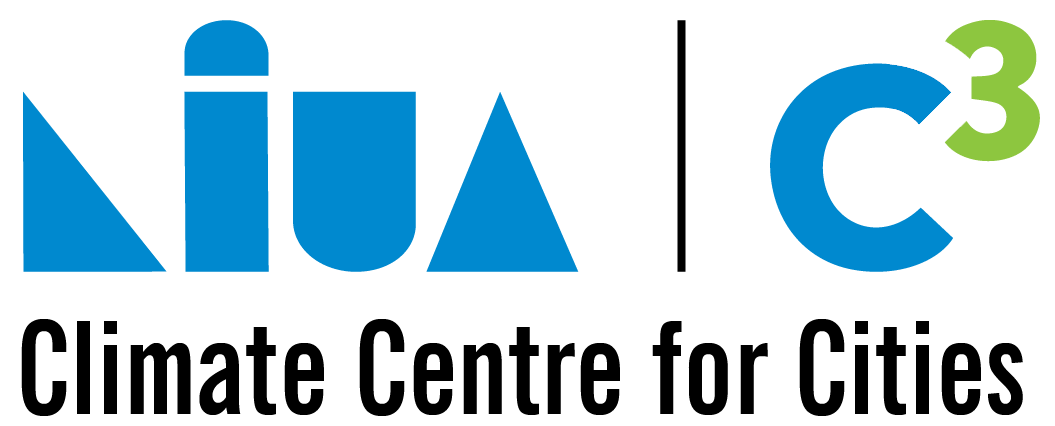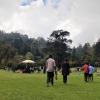Advancing Clean Air through Child Friendly Smart Cities
Published On:
Wednesday, November 11, 2020
According to the Clean Air Report of WHO, 2018, almost 93 percent of the world’s children below 15 years are exposed to polluted air making it a major health risk. Air pollution also impacts neurodevelopment and cognitive ability in children while being a trigger to asthma and childhood cancer. Children also absorb more pollutants and hence are more vulnerable to air pollution (WHO,2018). This is because they breathe faster than adults, spend additional time outdoors (and in more activity) and because their height is closer to the ground. They are also more prone to indoor air pollution be it polluting fuels, paint and unclean cooking, heating and lighting.
Many cities in the developing world today, are emerging as air pollution hotspots which makes it essential, to address the needs of children as a vulnerable community and protect them from the health risks involved. As cities grow, air pollution risk may be built over time in terms of establishment of dense settlements, increased traffic, and unplanned urban development. How best to map air pollution risk for a city generally depends on existing data available. While data may not be readily available there is wide acknowledgement of local-level risk and vulnerability assessments to reduce air pollution exposure of children. This can be a major driving force for cities to consciously consider the needs of children as a vulnerable community for air pollution while preparing a city development plan.
To determine a child’s vulnerability, three dimensions of vulnerability commonly identified are exposure that denotes the degree to which affected by a hazard or risk; susceptibility to risk that includes demographic factors such as age, gender, and socio-economic and the adaptive capacity that refers to actions taken either to reduce or avoid risk. (Howe et al., 2013). Urban vulnerability assessment in the context of air pollution and children involves identifying priority areas and neighborhoods. Correspondingly, addressing vulnerability from an air pollution perspective requires preparedness based on prediction and warning; capacity building to cope with and tackle the issue and reducing the impact of air pollution through mitigation.
One of the main factors affecting children's exposure is in the school environment where the child is exposed to indoor and outdoor sources of air pollution. These include multiple indoor sources like painting material, heating, cooking, cleaning products, textile fibers, electronic equipment, and outdoor sources like dust from sandy playgrounds and nearby traffic. Additionally children in schools are exposed to air pollution during their journey to school, the time they spend in pick up and drop spots and while being exposed to indoor heating/ cooling, type of air ventilation and location of the school. It is likely that schools located close to industry, busy roads or sources of dust are likely to experience higher levels of air pollution.
This is where smart cities can play a major role in making our cities provide clean air for children. The essence of a smart city is big data and the ability to combine this data from various sources to make better decisions in multiple areas of life to make living more efficient and comfortable. Data on air pollution for example, can be used to change or modify the transportation or mobility of people and goods. It can influence decisions relating to energy use and improve construction processes. Using big data can help to guide urban planning initiatives to help reduce exposure to air pollution. All this can be specifically focused to address the issue of reducing air pollution exposure of children and make a smart city also a child friendly city. For example, decisions such as where to build a new school looking at air pollution data as well as finding strategic city design solutions to reducing air pollution from sources around schools can make our cities more livable for children.
Smart cities can also play a major role in aligning the concept of child friendly cities to city development. For instance, some areas frequented by children may be better off closed to traffic entirely. Closing streets off and on has proven to be a successful way to increase outdoor activity for children by providing safe areas for children. These also create new areas of play. Car-free days need not be organized to get rid of traffic but can become an interesting public engagement process for a city to reduce air pollution with a focus on encouraging physical exercise and play. It is also nice visually for a city to have street closures that offer relief especially in dense neighborhoods with less green spaces. Prioritizing children in a smart city will help in not only providing healthy, safe outdoor spaces for young people, but conveying the importance of a sustainable future. Similarly, clean air zones can improve air quality in and around strategic areas like schools, playgrounds, parks and residential areas by encouraging green infrastructure and clean vehicles.
As we re-think our cities on the road to recovery after the pandemic, incorporating perspectives of children and making the child an important component of city design can help create more inclusive, healthier, livable cities. It is a good time for cities to start thinking proactively and for the long-term about how best to serve children. Regardless of a city’s particular state of development, clean air is essential for the residents of the city and particularly the child. Whether it is the decisions on mobility, housing or greening a city, child friendly approaches can go a long way to contribute to clean air and the smart city.
Contact Us
1st and 2nd Floor, National Institute of Urban Affairs
India Habitat Centre Lodhi Road New Delhi-110003
Please Call Help Desk at 011-411-86699
Monday - Friday, 9:00 AM - 5:00 PM
Please write to us at c-cube@niua.org







Post a Comment